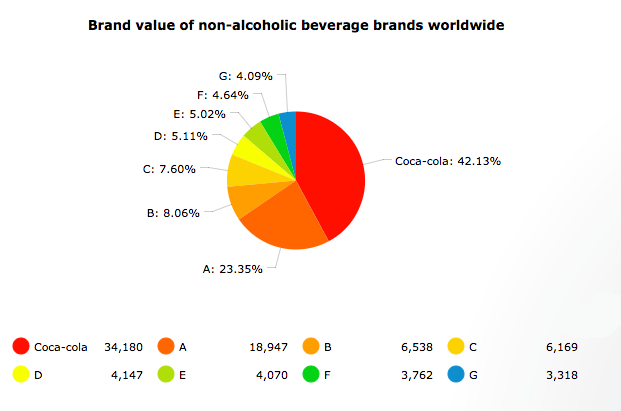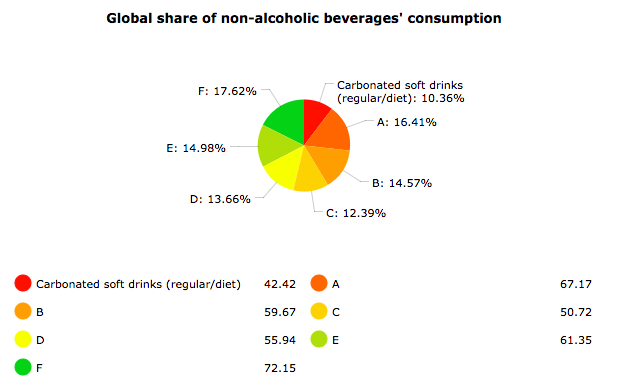Introduction
Full of Life is a company that produces non-alcoholic beverages made from locally sourced ingredients. The brand is invested into spreading the message of positivity and health; as a small business, it cooperates with local farmers to acquire fruit and vegetables for producing seasonally appropriate drinks. Full of Life is planning to expand its brand and capture large audiences with its message of environmental awareness and attention to the healthy lifestyle; importantly, the packaging of beverages is produced from recycled materials that customers can then throw into their compost.
In the case of Full of Life beverages, the non-alcoholic beverages industry presents vast opportunities as customers become more aware of their health and what they consume. This means that they have started paying more attention to ingredients. Also, Full of Life is invested into CRS issues to present itself as an environmentally sustainable brand that wants to reach a vast audience of consumers. Full of Life combines reasonable prices with high quality, leaving customers no choice but to buy refreshing Full of Life beverages.
Competitive Advantage
As to the competitive advantage of Full of Life beverages, the company is presented with relatively low barriers to entering the non-alcoholic beverage industry. Because the company works with fruit and vegetables, opportunities for brand extension (for example, energy bars and ready-to-eat salads). Customer Relationship Management focuses on developing a strong online presence for capturing the attention of new audiences and getting feedback from customers. Instead of focusing on the price a competitive advantage, Full of Life communicates real benefits of the beverage. Lastly, the drinks are available both in stores and online, which makes it more convenient.
Target Market
The target market for Full of Life beverages is associated with the demographics that are the most concerned with their health, as found by Goldman Sachs (2016), millennials and baby boomers are the most likely consumer segments who take care of their health. Also, parents and their children are included as the target market for Full of Life beverages because locally sourced ingredients that are free from additives and harmful substances are “on the radar” for parents that take care of their children’s health. “Average” grocery store shoppers have started paying more for healthy options of food and beverages (“SWOT analysis of vitamin water,” 2014 ).
Market Size
When speaking of the market size of the NAB industry, it is expanding rapidly. Barriers to entry are low since large corporations do not care about the competition from smaller family businesses, especially in the sector of healthy beverages. Still, cola drinks dominate the market at 42.13% (“Global non-alcoholic beverage market,” 2017). The North American region remains the largest market in the world. Also, South America and Africa show growth; however, India and China grow at the fastest pace compared to others, possibly reaching the growth in North America.
The pie charts below show that the market of non-alcoholic beverages is dominated by carbonated drinks, with Coca-Cola having the highest brand value among all companies. Because multiple new products are being launched each month and because sales campaigns flood the media, smaller companies such as Full of Life are challenged by large corporations. For capturing the attention of the public, the company has to come up with innovative business strategies. It is also noteworthy that the consumption of alcoholic beverages is still high, which points to the need of furthering the advertisement campaign for choosing healthy beverage options.


SWOT Analysis
The SWOT analysis of Full of Life beverages showed that the company’s greatest advantage is the orientation on customers and engagement in Corporate Social Responsibility efforts. On the other hand, products are more expensive compared to other NABs and thus are less appealing to some audiences. Opportunities are vast for brand extension and collaborations with influences. However, Nestle and Coca Cola still dominate the market.
Competition
The analysis of Full of Life’s competition showed that the current competition for the company involves both healthy and unhealthy drinks, corporations with global influence, smaller local businesses in the area, and Coffee shops. On the other hand, the competitive advantages for outweighing the competition involve low entrance barriers, opportunities for brand extension, strong online presence, availability both online and in stores, and benefit positioning.
The Team
Because Full of Life is a small company that has only started its development, the company’s team does not consist of too many workers. the company’s owner will perform the role of the Senior Manager. Regarding management, the team will include a sales and a marketing manager, a Customer Relationship Manager, Informational technology staff to manage the corporate software, manufacturing plant operators that will manage machinery that produces beverages. For distribution, drivers and couriers are needed in the team. Highly qualified quality control specialists are needed for keeping an eye on whether the drinks are up to par.
Business Model
Regarding the business plan of Full of Life beverages, key partners will include local farmers that will supply fruit and vegetables for the production of beverages. Key activities for Full of Life include three processes: production, distribution, and marketing; all three activities are targeted at providing customers with high-quality products. Key resources include ingredients for beverages, equipment for production, and sales personnel. Full of Life’s value proposition is associated with beverages made from organic ingredients. Lastly, revenue streams include sales of beverages and their advertisement of capturing a large audience of customers.
Customer relationships of Full of Life are associated with providing customers with high-quality products that are beneficial for their health. Corporate Social Responsibility is also high on the agenda for the company; as a “green” brand, Full of Life invests into raising awareness of environmental sustainability issues, especially in the context of food production. Customer segments include the mass market and health-conscious consumers that care about the quality of beverages’ ingredients. Sales channels include the online store and local grocery stores, with plans to capture the entire country in the future. The cost structure for Full of Life is made up of salaries, marketing costs, and operational costs, including distribution.
Milestones
The pie charts included in the slide show that the market of non-alcoholic beverages is dominated by carbonated drinks, with Coca-Cola having the highest brand value among all companies. Because multiple new products are being launched each month and because sales campaigns flood the media, smaller companies such as Full of Life are challenged by large corporations. For capturing the attention of the public, the company has to come up with innovative business strategies. It is also noteworthy that the consumption of alcoholic beverages is still high, which points to the need of furthering the advertisement campaign for choosing healthy beverage options.
References
Global non-alcoholic beverage market. (2017). Web.
Goldman Sachs. (2016). Millennials: Coming of age. Web.
SWOT analysis of vitamin water. (2014). Web.